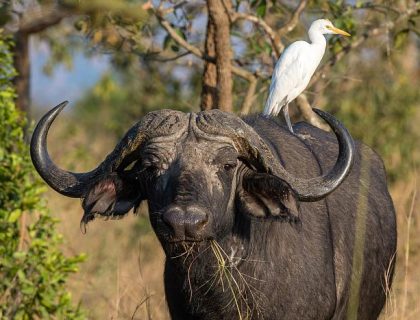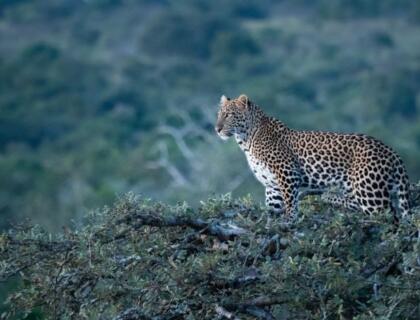Scroll for more
 Akagera National Park is Rwanda’s answer to the classic safari — only without the crowds. Tucked along the eastern border with Tanzania, this scenic lowland reserve is Central Africa’s largest protected wetland. And the last refuge for savanna-adapted wildlife in Rwanda. Here you’ll find buffalo, elephant, giraffe and zebra grazing quietly — with lion and leopard keeping a watchful eye from the acacia groves.
Akagera National Park is Rwanda’s answer to the classic safari — only without the crowds. Tucked along the eastern border with Tanzania, this scenic lowland reserve is Central Africa’s largest protected wetland. And the last refuge for savanna-adapted wildlife in Rwanda. Here you’ll find buffalo, elephant, giraffe and zebra grazing quietly — with lion and leopard keeping a watchful eye from the acacia groves.
Plus, you’ll share the roads with virtually no other vehicles.
The park’s landscapes are just as striking: rolling hills give way to swamps, shimmering lakes, and wide savanna plains. Plus, the wetlands of the Kagera River.
Here’s a fun fact — the Kagera River flowing through Akagera eventually joins the mighty Nile, making this reserve part of the longest river system in the world.
Game drives are a delight, but where an Akagera safari really shines is on the water. A boat cruise on Lake Ihema reveals pods of hippo, thirsty elephants, and Nile crocodiles that look like they’ve swallowed the “Do Not Disturb” sign.
 Birders will be in heaven too, with everything from noisy colonies of cormorants to the elegant open-billed stork.
Birders will be in heaven too, with everything from noisy colonies of cormorants to the elegant open-billed stork.
This is Rwanda’s only park where you’ll see the Big Five, with elephants being a particular highlight. For those who like a bit of variety with their safaris, Akagera offers the perfect contrast to gorilla trekking in the Volcanoes National Park. Or chimpanzee encounters in Nyungwe Forest.
Bursting with a rich biodiversity, Akagera National Park features a variety of rare species, such as topi, klipspringer and even Cape eland. Plus, plenty of general game and hundreds of bird species.
Plus, an Akagera safari is also the only place you are likely to see elephant in Rwanda.
Akagera National Park was once heavily poached, but thanks to extensive wildlife reintroduction and conservation efforts, lions were brought back in 2015 and black rhino in 2017. Making Akagera a genuine Big Five park again.
Best time to visit Akagera National Park
The best time to visit Akagera is during one of the dry season periods from December to mid-March and June to mid-September.
Is Akagera National Park a Big Five safari destination
Yes, with the reintroduction of both lion and black rhino, Akagera offers a Big Five safari and the only reserve in Rwanda to do so.
How does an Akagera safari compare to gorilla trekking in Rwanda?
Bottom-line. Its completely different! Gorilla trekking in Volcanoes National Park is one of only 3 places in the world where you can trek to see the mountain gorillas. Whereas Akagera is your more classic savanna plains offering a wide variety of wildlife including elephants, lion, leopard, black rhino and rare antelope species.
Ready to pair gorilla trekking with a classic Big Five safari? Let us craft your tailor-made Rwanda journey.
